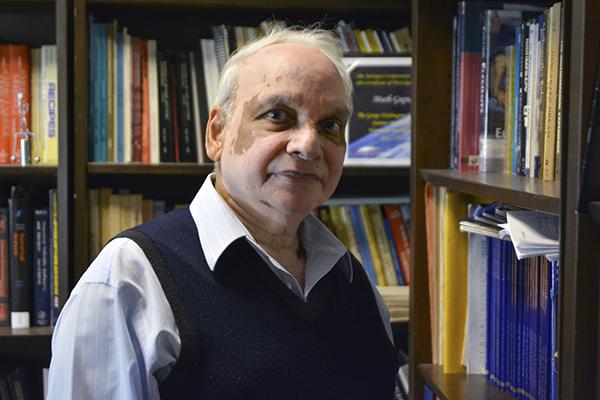The math department is struggling to make the numbers work.
Students and faculty in the department of mathematics say there aren’t enough professors to teach both the majors and the students who are required to take courses from the department as part of their own curriculum. The strain is leaving those in the core of the department saying that they feel overwhelmed and neglected.
Faculty say they are overextended, as the numbers of math majors and graduate students is consistently increasing and the number of full-time faculty is shrinking. Math students are not getting the advising they once did because the department does not have enough faculty to give them the attention, said Murli Gupta, the chair of the department.
Gupta said the number of math majors has tripled over the past five years, with more than 100 undergraduate students majoring in math, including double majors. But while that number rose, the number of full-time faculty in the department fell, as more part-time adjunct professors were added instead.
In 2013, 38 students majored in only math or majored in math as the first of their two majors, more than triple the number of majors in the program in 2009, according to the latest data available from the Office of Institutional Research.
The department currently hosts 19 full-time professors and seven adjunct or part-time professors.
Part of those faculty decreases likely stems from the University-wide budget crunch, in which officials have asked departments to cut 5 percent from their budgets.
Gupta said he requested four additional faculty members for the upcoming year, but he is that doubtful the department will be able to add any.
“Students need classes and need to sit in the classes. Basically, the revenue shortage problems are affecting faculty and students,” Gupta said. “There are many adjunct professors who are extremely dedicated but the fact of the matter is that they can’t always be here when the students need them.”
He added that tenured or tenure-track professors, instead of adjuncts, get a better sense of the school and are able to give undergraduate students more opportunities for research.
“These people have some long-term view of what they do or what they’ve been doing and they have projects that could feasibly involve undergraduates,” Gupta said.
Gupta said research in mathematics is less expensive than in science, technology and engineering fields. The University has focused on increasing STEM programming, with the opening of the $275 million Science and Engineering Hall and by launching the search for the director of an undergraduate STEM academy this month. That program will connect professors from the Columbian College of Arts & Sciences, the School of Engineering and Applied Science and the Graduate School of Education and Human Development.
Max Alekseyev, a computational biology and mathematics professor, began teaching math courses this semester to make up for the shortage of faculty, and to give students the opportunity to apply math to other areas of science.
“The math department looks for applications beyond traditional mathematics, because it is hard to get grants to do just mathematics,” Alekseyev said. “If you have practical problems, it is easier to get external funding. The department is open-minded and finds practical people who can apply math to the real world.”
Jacob Coblentz, a sophomore in the Columbian College who is majoring in math and political science, said cuts in the department have meant fewer courses are offered – making it hard to schedule classes.
“There is a class which is a requirement for all majors, but is offered once a semester in a much larger setting than it should be,” Coblentz said. “It can make scheduling impossible when only one section of a necessary class is scheduled, and it overlaps with another required class.”
The department has also had to increase the cap on the number of students in a course, said Joseph Bonin, a professor of mathematics.
Classes that usually had a maximum of 75 students now have 100 or more, he said.
“The number of courses I teach hasn’t increased but the amount of time you have to put into them certainly has,” Bonin said.
Bonin said he spends more time grading papers and has had to cut down on the amount of time he spends advising individual students outside of the classroom.
He also said the department has been shuffled around to different classrooms, which have fancy upgrades like video screens. But he said math classes require more basic amenities, like blackboards.
“It’s harder and harder to find a room in this University with a decent board to write on, and you need that in math,” Bonin said. “The rooms have gotten fancier, and I’m under the impression they’re meant to impress tour groups when parents are visiting, but they aren’t designed to teach calculus in.”







